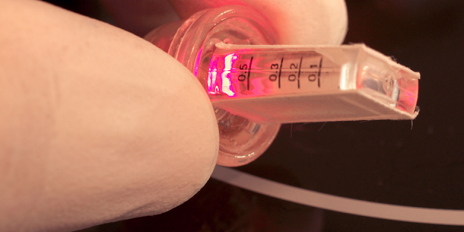Bioengineering: Thought Waves Used to Control Gene Expression in Protein Production

Scientists have tapped into human brainwaves to control a gene network involved in production of proteins.
By transferring thoughts wirelessly, ETH bioengineers could manipulate the gene expression for proteins.
The novel gene regulation by thought-control could lead to implants that combat neurological diseases, like chronic headaches, back pain and epilepsy, by detecting specific brainwaves at an early stage and triggering production of alleviating agents at the right time.
Marc Folcher and other researchers from the group led by Martin Fussenegger, Professor of Biotechnology and Bioengineering at the Department of Biosystems (D-BSSE) in Basel used an EEH headset to record brain waves.
These were analysed and transmitted via Bluetooth to a controller that switches on the current to an implant.
The implant emits LED light in the near infrared range to illuminate a culture of genetically modified cells and trigger them to produce a desired protein.
The bioengineers have presented their findings in the journal Nature Communications.
The implant was initially tested in cell cultures and mice, and controlled by the thoughts of various test subjects.
The researchers used SEAP, an easy-to-detect human model protein which diffuses from the culture chamber into the mouse's bloodstream.
To control the quantity of protein, the test subjects were categorised according to three states of mind: bio-feedback, meditation and concentration.
Those who played Minecraft on the computer, calling for concentration, induced average SEAP values in the bloodstream of the mice.
Those completely relaxed (meditation) recorded very high SEAP values in the test animals.
For bio-feedback, the test subjects observed the LED light of the implant in the body of the mouse and were able to consciously switch it on or off via the visual feedback.
This in turn was reflected by the varying amounts of SEAP in the bloodstream of the mice.
The system was found to work efficiently in the human-cell culture and human-mouse system.
© Copyright IBTimes 2025. All rights reserved.





















